How to Defend in Chess — 7 Most Important Defense Principles
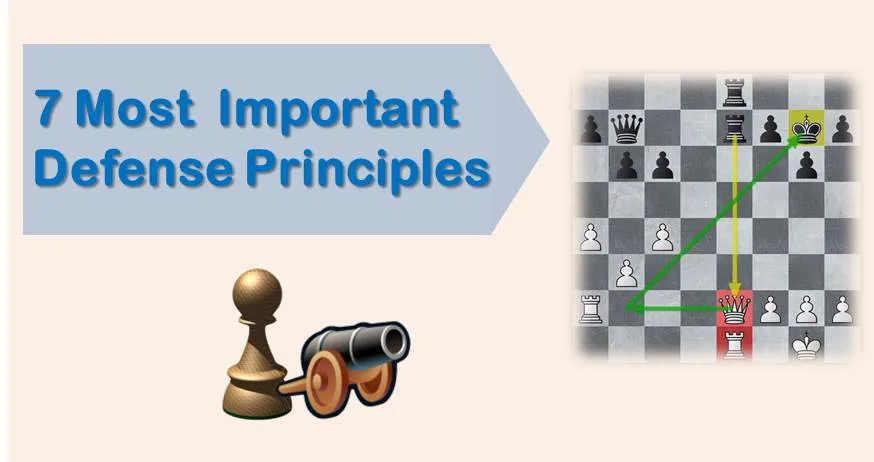
The art of defense at chess is a very important and serious subject neglected by many amateur players. These players mostly focus on attacking chess, tactics and sacrifices. It is indeed important to know how to attack at chess, but it is equally important to understand how to play solid defense and get yourself out of hard positions. After reading today’s article you will learn about seven most important principles of defense at chess, and hopefully will be able to apply those in your own games.
Defense Principle #1. Identify the threats
It is a good principle to always think about the defense first. After your opponent makes a move you should access all changes that occurred on the board as well as identify all threats that that move may possess. You should always ask yourself the following questions:
1. What is the idea behind this move?
2. What is opponent threatening/defending?
3. What would be the strongest response to your move?
In the position below black just played 1…Qb6 protecting the knight. However it is clear that this is not just a defensive move. At the same time, black threatens to take on f2 since both his bishop and the queen are attacking this vulnerable square. It is important to identify all of the ideas and threats behind each of the opponent’s moves so that you can react accordingly.
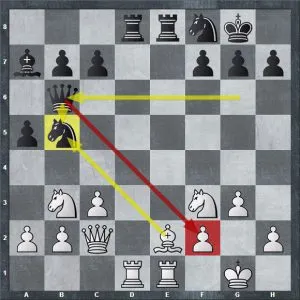
White to move
Defense Principle #2. Keep the back rank protected
There is countless number of games that ended with a quick back rank mate because one of the sides did not pay enough attention to this very important element. Always keep in mind that safety of the king is the top priority. Back rank is something that makes the castled king very vulnerable if it is unprotected.
In the position below it is white to move. The a7-pawn is unprotected and white can grab it with a rook winning the pawn, and entering the 7th rank with initiative. But, if we look at the position closely that comes at a price. And that price is very high. White’s back rank is unprotected and if he was to play 1. Rxa7??, black would end the game instantly after 1…Re1#.
White however saw that threat and played 1.g4! keeping positional edge.

White to move
Tip
If you want to improve your positional chess and start converting more middlegames into wins, you should give a try to our training course which covers most important middlegame positions in a step-by-step easy to follow and understand way.
Defense Principle #3. Keep all of your pieces protected
Keeping all of your pieces protected will promote safety and give you piece of mind. Often we have a tendency to advance our pieces deeper into enemy’s territory without worrying too much about safety. A general rule of thumb which is especially important to remember for amateur players is too keep all of your pieces defended by another piece and pawn. That will minimize the possibility of a quick fork, double attack or skewer.
In the example below white needs to think about safety. Black has a strong move Qa5, double attacking the bishop and giving a check. White can tackle that problem in two ways.
The first way is to play something like Bb3, putting the bishop to safety. Another way is to simply castle, removing the possibility of check in a first place.
What way do you think is better? Indeed, castling (probably king’s side) looks like a more logical option because not only it eliminates the double attack problem, but also puts the king to safety and connects the rooks. Always go for the most “useful” move, that accomplishes more than one thing at the same time.
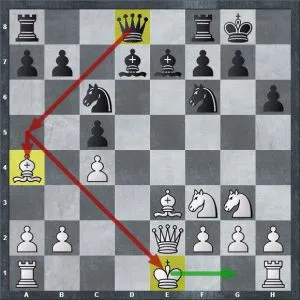
White to move
Defense Principle #4. When you’re short in space – simplify
This is a common sense rule, but nevertheless, many players miss it. If you are down in space, you have much less territory to maneuver your pieces. With each piece you exchange, it will be that much easier for you to play. At the same time, you will be able reposition your remaining pieces for better defense or attack, partially negating your opponent’s space advantage.
In the example below white is desperately short on space. The best bet for him is to exchange pieces and try to organize a counter-attack on the queen’s side. The correct move here would be to play 1. Qxa6.
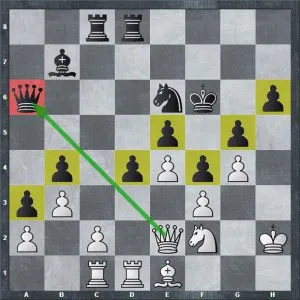
White to move
Defense Principle #5. Exchange off your opponent’s best attacking piece
By exchanging off your opponent’s strongest piece you will be able to significantly decrease his attacking possibilities. For example, in position below white has a very strong dark square bishop that threatens black king’s safety. Black manages to find a way to force and exchange and equalize inferior position.
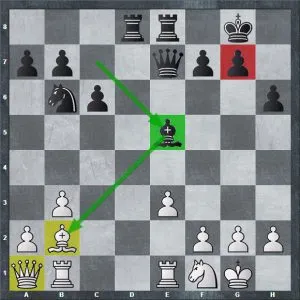
White to move
Defense Principle #6. Avoid pins and skewers
You should always think of pinned or skewered pieces as those pieces who lose their mobility and value. Ideally you should anticipate and prevent getting your pieces pinned or skewered. If that happened you should try to find a way to break the pin or skewer and free the piece. Sometimes that requires creativity.
In the example below white is in trouble. The queen is skewered to the rook and cannot move because of the mate threat. White also cannot take on e7 with a queen since it loses material and the game. However, white has a trick up his sleeve that allows him to stay in the game. White can give a check by playing 1. Qb2+, breaking the skewer and saving the day.
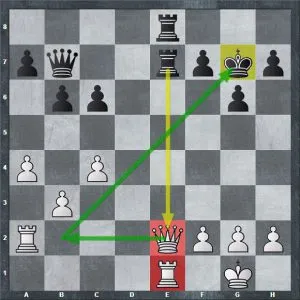
White to move
Defense Principle #7. If you’re in trouble – counter attack
This rule is especially important. Sometimes when we are under pressure it is very hard to make good decisions and our defense collapses.
In the position below white is in trouble. Not only he is a pawn down, but it seems like the b3 and the rest of the queen’s side will follow. White’s rook is misplaced and cannot protect the pawns. In this case, the best option for white is to counter-attack black’s c and b-pawns, complicating the position and staying in the game.
The correct move is 1. Rd7!

White to move
Tip:
In order to understand how to play middle-games well it is important to have deep positional understanding. In order to improve your positional understanding we suggest you to sign up for our comprehensive training course.
Over 1,000 chess players have already benefited from our training . Don’t wait, start winning chess games today.
Now you know how to defend in chess.
Ready to apply chess defense principles? Check out our store and articles:



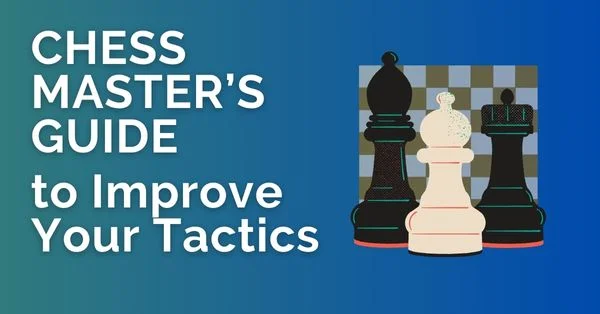
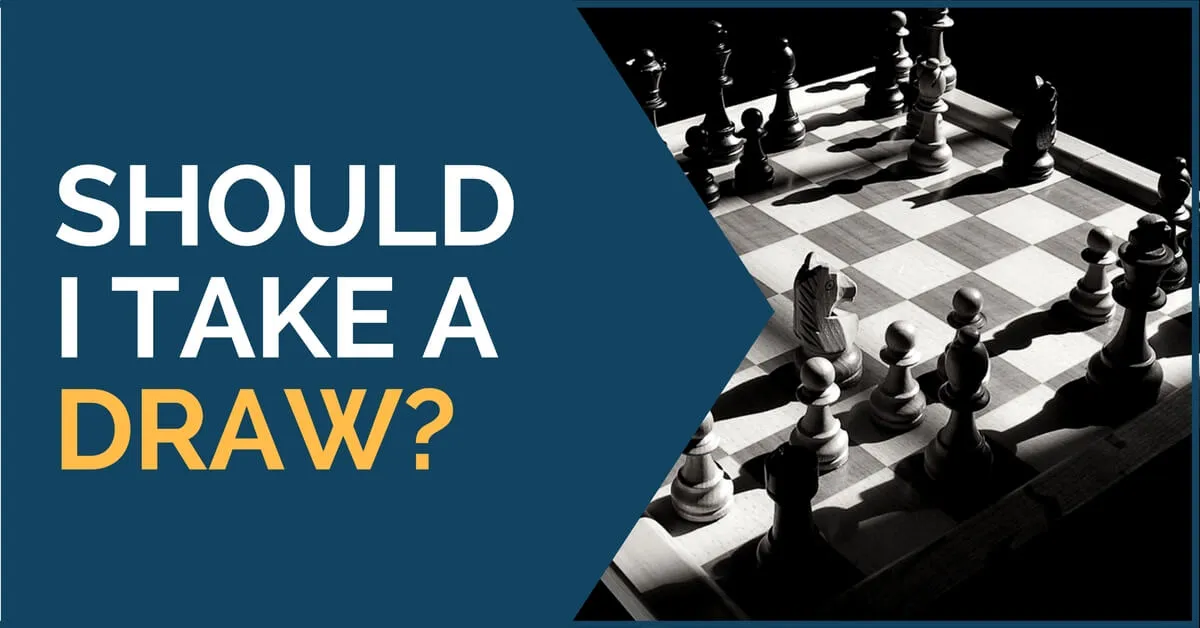





Comments: